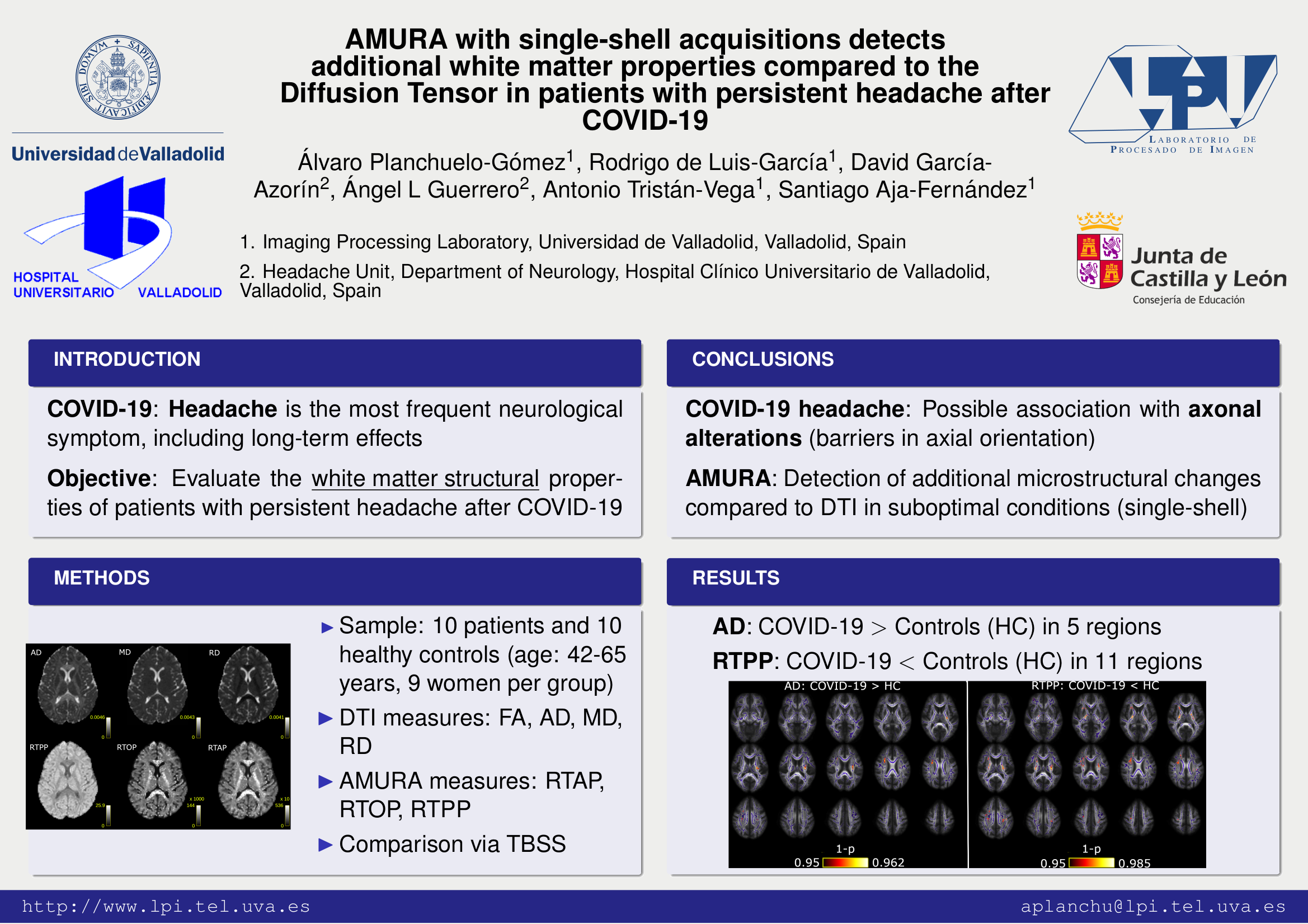AMURA with single-shell acquisitions detects additional white matter properties compared to the Diffusion Tensor in patients with persistent headache after COVID-19

Poster presented at the I Annual Meeting of the Iberian Chapter of the ISMRM (2021)
INTRODUCTION: The novel coronavirus disease 2019 (COVID-19) presents multiple symptoms throughout the body. These symptoms include neurological effects, and headache is one of the most reported neurological associations of COVID-19, including long-term consequences [1,2]. Our objective was to evaluate the white matter structural properties of patients with persistent headache after COVID-19.
METHODS: Ten patients with headache six months after COVID-19 infection and 10 healthy controls balanced for age and sex were recruited. High resolution brain diffusion Magnetic Resonance Imaging (dMRI) data were acquired using one shell with b = 1000 s/mm2 and 61 gradient orientations. Further details regarding MRI acquisition, dMRI pre-processing and the comparison between patients and controls with tract-based spatial statistics are available in [3]. To compare both groups, Diffusion Tensor Imaging (DTI) scalar measures and additional diffusion descriptors were extracted with the approach Apparent Measures Using Reduced Acquisitions (AMURA) [4]. AMURA scalar measures were the return-to-axial (RTAP), return-to-origin (RTOP) and return-to-plane probability (RTPP).
RESULTS: In patients, significant higher axial diffusivity (AD) was identified in five areas from the corona radiata, and the external and the internal capsule. Additionally, lower RTPP values in patients in the same regions and other extra six areas from the same tracts and the superior longitudinal fasciculus. These differences are shown in Figure 1.
DISCUSSION & CONCLUSION: White matter changes in headache attributed to COVID-19 seem associated with axonal alterations, specifically, restrictions in barriers in the axial orientation and the water displacement. Despite the suboptimal conditions to exploit the full potential of AMURA due to the dMRI acquisition, it has detected additional properties in comparison with DTI. Our results suggest that AMURA is a promising approach to assess white matter microstructural properties using dMRI acquisitions usually employed in the clinical environment.
[1] MA Ellul et al. Neurological associations of COVID-19. Lancet Neurol, 19 (2020), 767-783
[2] JK Logue et al. Sequelae in Adults at 6 Months After COVID-19 Infection. JAMA Netw Open, 4 (2021), e210830
[3] Á Planchuelo-Gómez et al. Alternative Microstructural Measures to Complement Diffusion Tensor Imaging in Migraine Studies with Standard MRI Acquisition. Brain Sciences, 10 (2020), 711
[4] S Aja-Fernández et al. Micro-structure diffusion scalar measures from reduced MRI acquisitions. PLoS ONE, 15 (2020), e0229526
